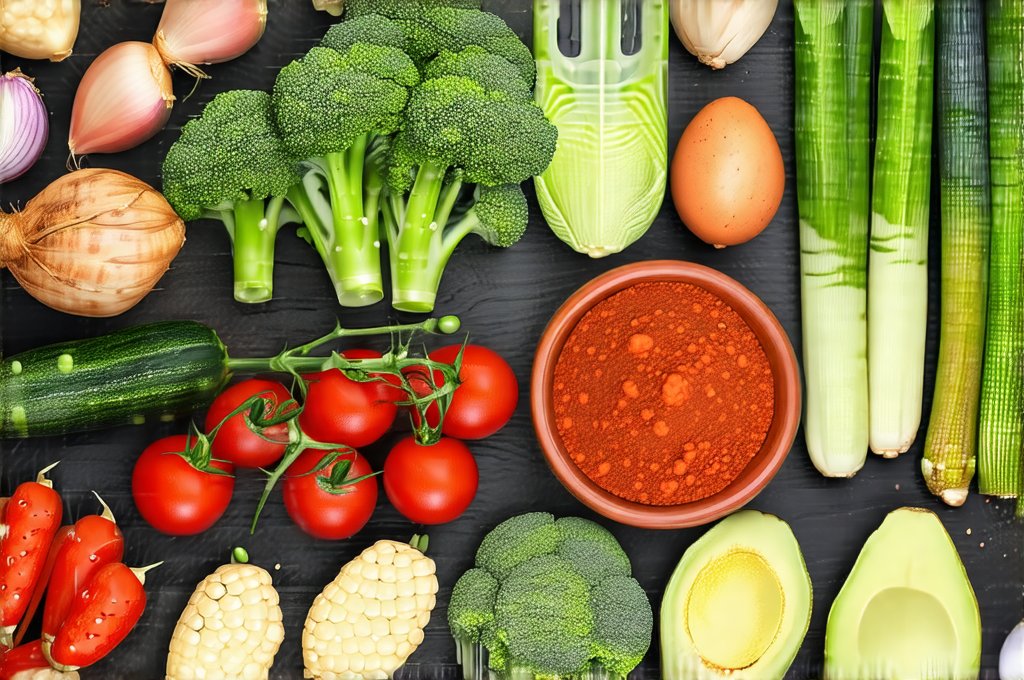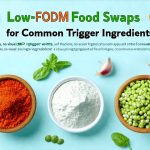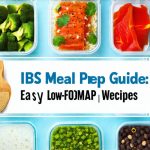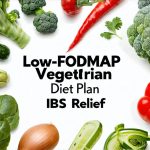The low-FODMAP diet can feel incredibly restrictive, often conjuring images of bland meals and limited choices. For many people experiencing digestive issues like Irritable Bowel Syndrome (IBS), it’s a necessary step to identify food sensitivities and reduce uncomfortable symptoms. However, the goal isn’t permanent elimination; it’s about learning what your body tolerates. The initial phase involves removing high-FODMAP foods, then systematically reintroducing them to pinpoint triggers. This process can be daunting, but it becomes more manageable – and enjoyable! – when you focus on swapping rather than simply subtracting. Instead of feeling deprived, embrace the opportunity to explore new ingredients and recipes that support your gut health without sacrificing flavor or satisfaction.
Many common foods are high in FODMAPs (Fermentable Oligosaccharides, Disaccharides, Monosaccharides And Polyols) – carbohydrates that can be poorly absorbed in the small intestine, leading to fermentation by gut bacteria and subsequent digestive distress. But for every forbidden food, there’s often a readily available alternative. This article focuses on practical FODMAP swaps you can easily implement at home, transforming your kitchen into a haven of gut-friendly deliciousness. We’ll explore how to replace frequently problematic ingredients in everyday meals, making the low-FODMAP lifestyle less about restriction and more about mindful eating and informed choices.
Navigating Common High-FODMAP Foods & Their Replacements
The biggest hurdle for many starting a low-FODMAP diet is understanding which foods to avoid. Garlic and onion are notorious culprits, often appearing in countless recipes. Fruit juices, apples, pears, honey, and high fructose corn syrup also frequently appear on the “avoid” list. Wheat and rye can be problematic due to fructans, while dairy products containing lactose can trigger symptoms for those with lactose intolerance. Legumes like beans and lentils are high in galacto-oligosaccharides (GOS). But don’t despair! There’s a surprisingly wide range of safe alternatives that can maintain the flavor profiles you enjoy.
For instance, instead of garlic and onion, infuse your dishes with flavour using garlic-infused oil (using the oil only, as the garlic itself remains high-FODMAP) or asafoetida (hing), a spice used in Indian cuisine which mimics allium flavours. Lactose-free dairy products are readily available, and alternatives like almond milk, rice milk, or oat milk can be substituted in many recipes – just check labels for added FODMAPs. Gluten-free bread made from low-FODMAP flours (like rice flour, tapioca starch or potato starch) provides a familiar base for sandwiches. The key is to research and experiment with different options until you find what works best for you. If you’re struggling with identifying trigger foods, consider exploring resources like how to identify the worst trigger foods for IBS.
When making substitutions, remember that portion size matters. Even low-FODMAP foods can cause issues if consumed in excessive amounts. Monash University’s FODMAP Diet app is an invaluable resource, providing detailed information about the FODMAP content of various foods and safe serving sizes. It’s a small investment that can significantly improve your dietary management and reduce guesswork. Many people find relief by making low-fodmap food swaps for common trigger ingredients.
Building Blocks: Swapping for Flavor & Texture
Beyond individual ingredient replacements, it’s important to consider how substitutions impact the overall texture and flavour of your meals. Often, simply swapping one ingredient for another isn’t enough – you need to adjust cooking methods or add complementary flavours to recreate a satisfying dish. For example, if you’re replacing wheat pasta with rice noodles, you might want to add extra vegetables or protein to compensate for the difference in texture and substance.
Consider how you build flavour profiles. Garlic and onion contribute depth and complexity; asafoetida offers similar aromatic qualities, but may require experimentation to achieve the desired effect. Herbs and spices become your best friends on a low-FODMAP diet. Experiment with turmeric, ginger, cumin, coriander, rosemary, thyme, and basil to add vibrancy and dimension to your dishes. Don’t underestimate the power of acidity – a squeeze of lemon juice or a splash of vinegar can brighten up flavours and make meals more palatable.
Finally, remember that texture is crucial for enjoyment. If you miss the crunch of breadcrumbs, consider using crushed rice cakes or almond meal as a substitute. For creamy textures, lactose-free yogurt or coconut cream offer viable options. The goal is to create meals that are both gut-friendly and satisfying, so don’t be afraid to get creative in the kitchen! You might also find it helpful to understand common ingredients in restaurant foods that may trigger post-meal nausea when dining out.
Rethinking Breakfast Options
Breakfast can often be a minefield of high-FODMAP ingredients. Traditional cereals frequently contain wheat and fruit juice, while pastries are loaded with fructans. However, there are plenty of delicious and safe alternatives:
- Oatmeal: Use certified gluten-free oats (check portion size – 1/2 cup dry rolled oats is generally considered low-FODMAP) and top with lactose-free yogurt or a small amount of maple syrup. Add berries like blueberries, strawberries or raspberries which are lower in FODMAPs than other fruits.
- Eggs: A versatile option that can be prepared in countless ways – scrambled, fried, poached, or as an omelet. Pair them with spinach and lactose-free cheese for a satisfying breakfast.
- Rice porridge: Made from white rice, this is a gentle start to the day. Add cinnamon and a small amount of maple syrup for flavour.
- Avoid fruit juices and limit high-FODMAP fruits like apples and pears in your morning meal.
Mastering Lunchtime Swaps
Lunch often presents similar challenges – sandwiches on wheat bread, salads with onion or garlic dressing, and soups containing legumes are all potential triggers. Here’s how to create low-FODMAP lunches:
- Salads: Use lettuce as a base and add cucumber, carrots, bell peppers, spinach and shredded chicken or tuna. Dress with olive oil and vinegar or lactose-free mayonnaise. Avoid onions, garlic, and high-FODMAP vegetables like broccoli and cauliflower.
- Gluten-Free Sandwiches: Use gluten-free bread and fill it with lean protein (turkey, ham, chicken), lettuce, tomato, and lactose-free cheese.
- Leftovers: Reheating dinner leftovers is a great way to ensure you have a low-FODMAP lunch on hand.
Dinner Delights: Navigating Main Courses & Sides
Dinner can be the most challenging meal, as it often involves more complex recipes and a wider range of ingredients. But with careful planning and strategic substitutions, you can create delicious and satisfying dinners that won’t upset your stomach:
- Protein Sources: Chicken, fish, beef, tofu (firm or extra-firm) are all excellent low-FODMAP protein sources.
- Side Dishes: Mashed potatoes made with lactose-free milk or coconut milk, roasted carrots and parsnips, steamed green beans, and rice are all safe options.
- Sauces & Marinades: Avoid garlic and onion in sauces and marinades. Use herbs, spices, ginger, turmeric, and asafoetida to create flavorful alternatives. Lemon juice and vinegar can also add brightness and depth of flavour. Remember to check ingredient lists carefully on pre-made sauces as they often contain hidden high-FODMAP ingredients. Understanding are you eating too many trigger foods at once can also help manage dinner symptoms.
It’s important to remember that navigating the low-FODMAP diet is a personal journey. What works for one person may not work for another, so it’s essential to listen to your body and adjust your diet accordingly. Don’t be afraid to experiment with different swaps and combinations until you find what feels best for you. With a little planning and creativity, you can enjoy delicious and satisfying meals without compromising your gut health. And don’t forget the benefits of cooking at home for reflux control when preparing these meals!


















